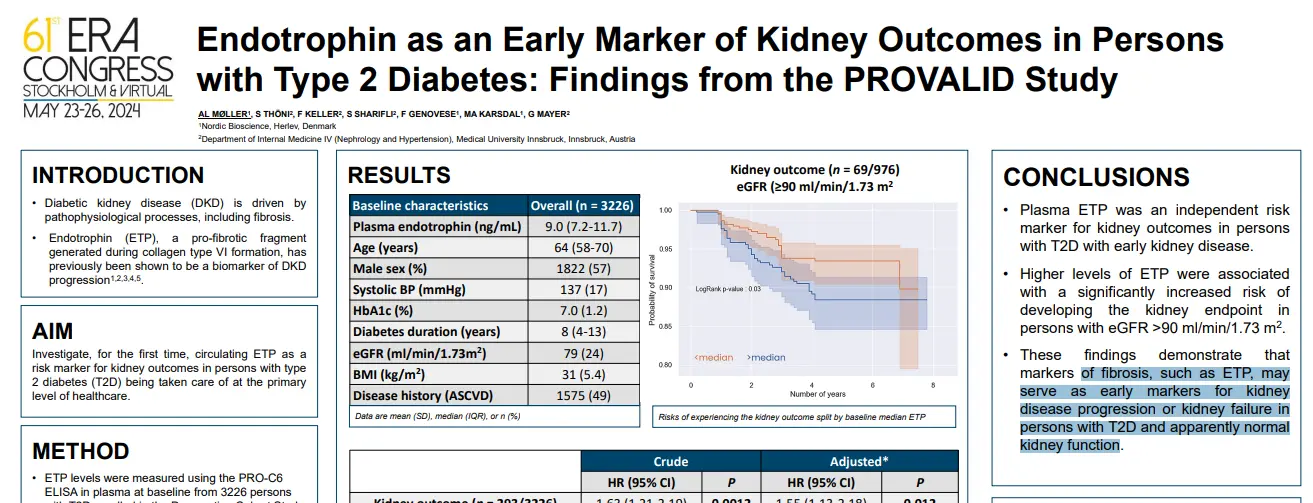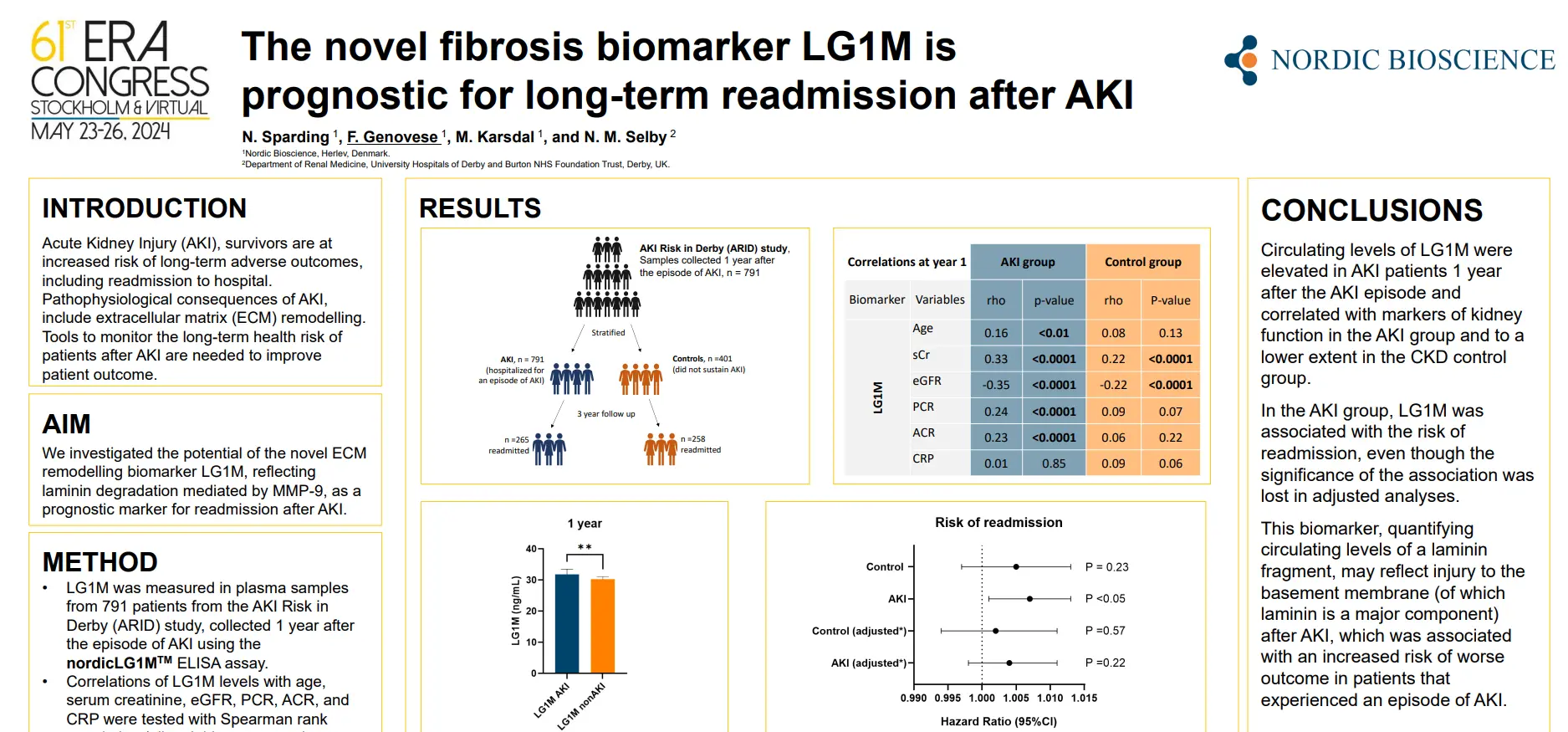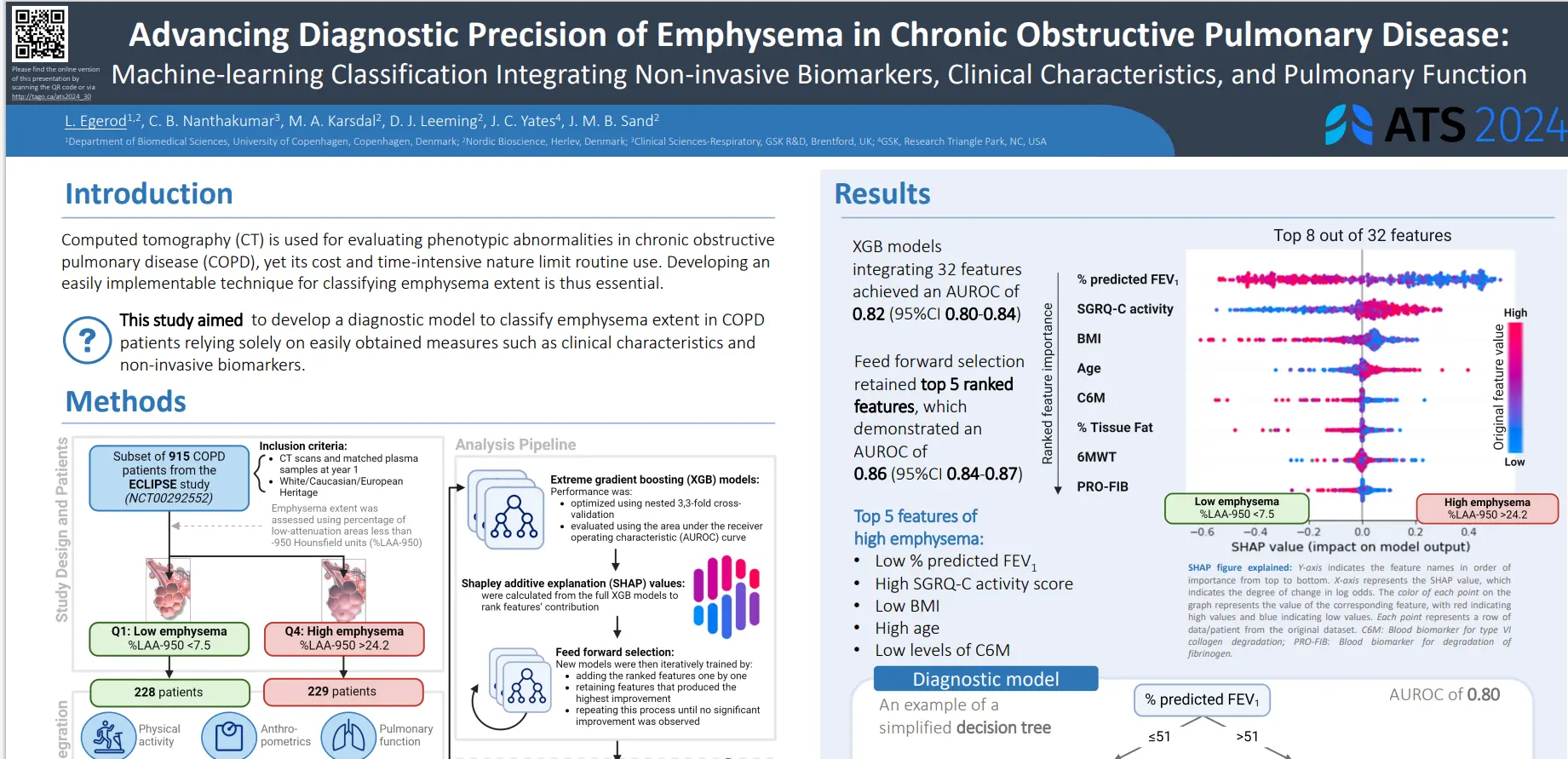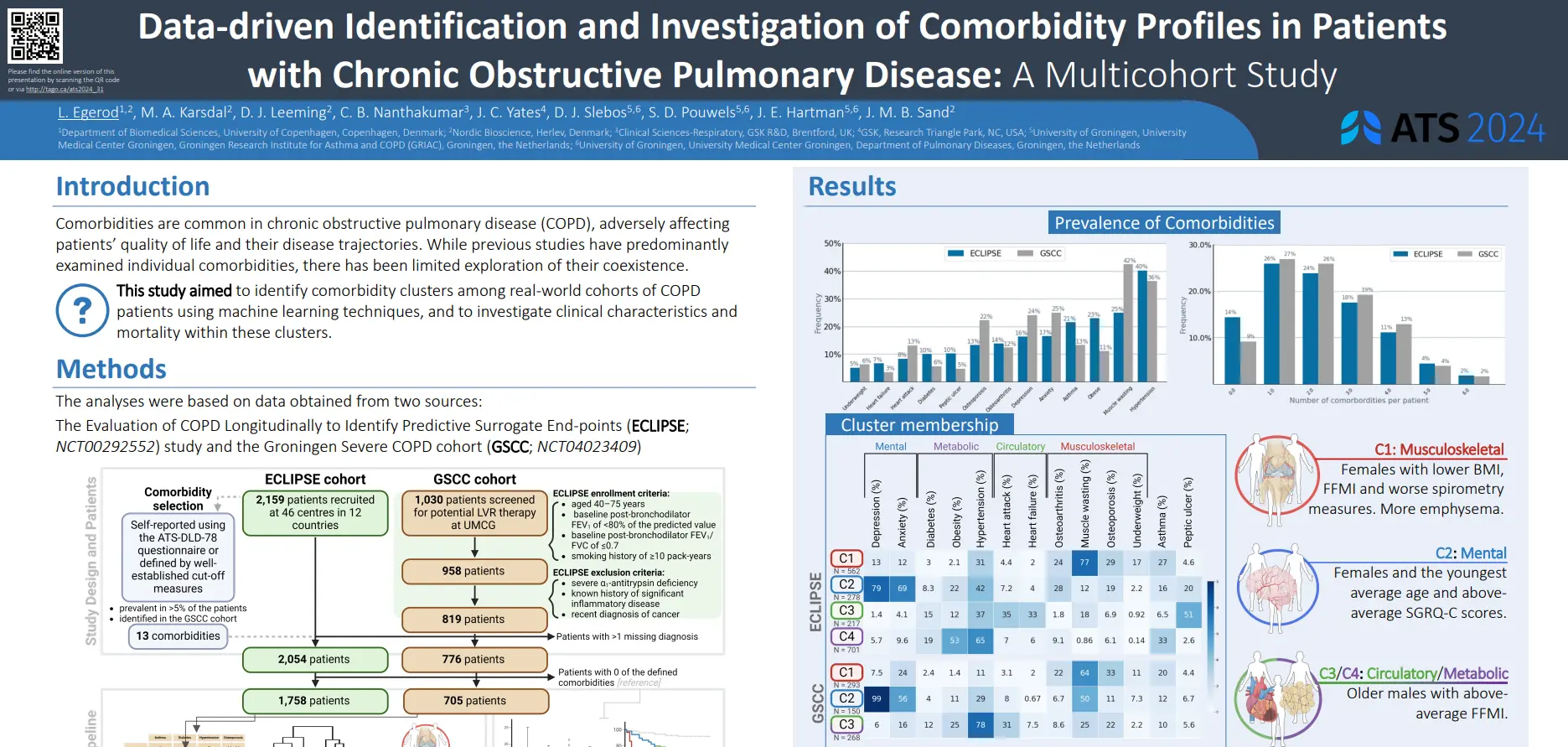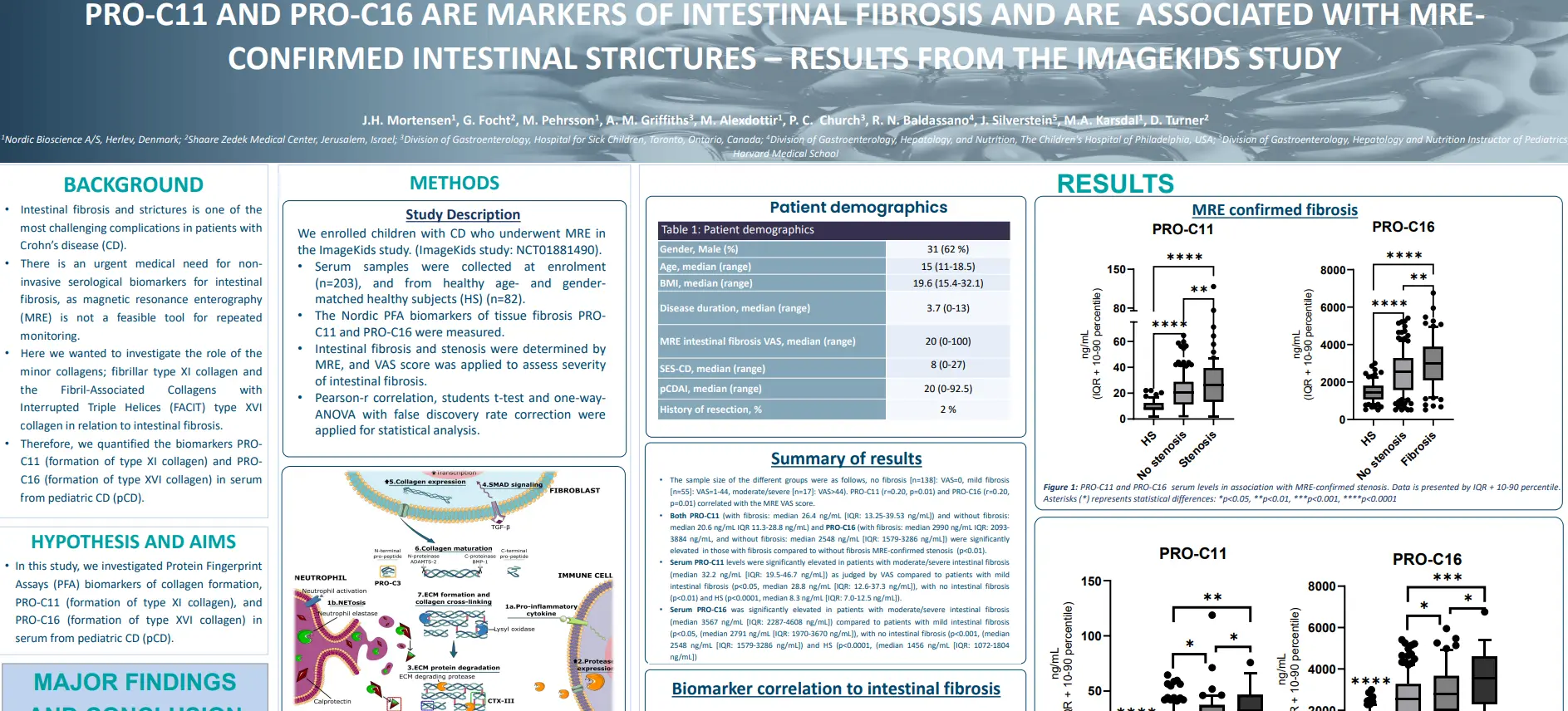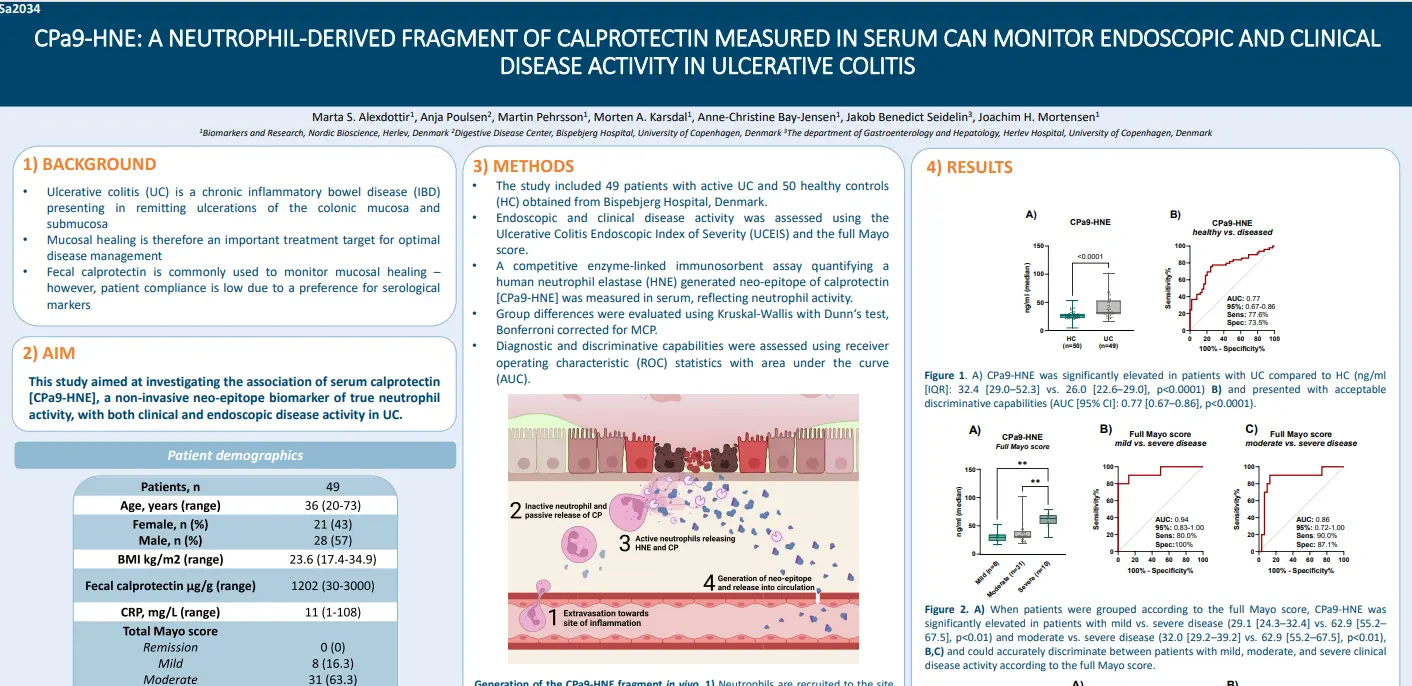Endotrophin as an early marker of kidney outcomes in persons with type 2 diabetes: Findings from the PROVALID study
Introduction
Diabetic kidney disease (DKD) is driven by pathophysiological processes, including fibrosis. NordicEndotrophin™ (ETP), a pro-fibrotic fragment generated during collagen type VI formation, has previously been shown to be a biomarker of DKD progression1,2,3,4,5. The aim of this study was to investigate, for the first time, circulating ETP as a risk marker for kidney outcomes in persons with type 2 diabetes (T2D) being taken care of at the primary level of healthcare.
Poster
Conclusion
Plasma ETP (nordicEndotrophin™) has been identified as an independent risk marker for kidney outcomes in individuals with type 2 diabetes (T2D) with early-stage kidney disease. Higher levels of ETP were associated with a significantly increased risk of developing the kidney endpoint in persons with eGFR >90 ml/min/1.73 m2. These findings demonstrate that markers of fibrosis, such as ETP, may serve as early markers for kidney disease progression or kidney failure in persons with T2D and apparently normal kidney function.
